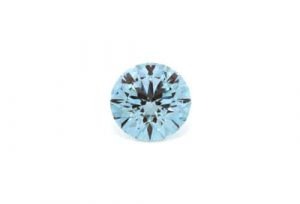Laboratory-created gemstones
Lab-created (or synthetic) gemstones can be a stunning and ethical alternative to their natural counterparts. But what are your options? And how do you buy well?
What most people don’t know is that a true lab-created gemstone is not an imitation. In technical terms, a lab-created gemstone is one that has a direct natural counterpart, just a different method of production.
Popular options: Moissanite, Lab-created Diamonds, Lab-created coloured gemstones
Why choose a lab-created gemstone?
These days, most popular (and relatively expensive) gemstones have lab-created alternatives.
Options can include rubies, sapphires, emeralds, spinel and more.
Moissanite is a popular diamond alternative that’s also a big money saver.
Apart from being quite a bit less expensive, you may favour them because:
- You’re ethically opposed to mining. They’re a great option—along with recycled and vintage gems;
- Lab-created gems are often significantly cheaper than their natural counterparts;
- They tend to be more consistent in colour;
- They typically have fewer visible inclusions than natural coloured gemstones; and
- They’re more readily available than some natural gem varieties—especially if you want an ethically sourced gem. (For example, Fair Trade emeralds are very hard to come by, so sometimes a lab-created gem is your only realistic option).
Buyer beware! Not all lab-created gemstones are created equally. And sometimes they are not man made versions of a mined gemstone at all. Please ensure that you are purchasing a genuine lab-created gemstone from a known brand or manufacturer. Whilst there are several good brands, we usually favour gemstones made by Chatham due to their consistent high quality.
Moissanite – ‘the’ diamond alternative
Moissanite* is the most popular created gemstone we sell. Because of its colourlessness and sparkle, it’s often chosen as a diamond alternative, but is also loved in its own right.
*Though extremely rare, natural moissanite does exist and is usually found adjacent to meteorite craters. In it’s natural form it’s normally quite greyish in appearance.
Bling without breaking the bank

Moissanite engagement ring with Argyle diamonds set in the shoulders of the band
If you want the bling effect without the bling budget, moissanite can fit the bill.
A one carat diamond equivalent (6.5mm round) can be yours for less than $1,000**.
That’s not bad when compared with a $10,000 starting point for a good quality (recycled) one carat natural diamond. Argyle and Canadian diamonds are even more expensive.
We offer Charles & Colvard Forever One™ colourless moissanite.
**Price refers to the gemstone only. Metal, manufacturing, engraving and other jewellery elements cost extra.
Lab-created diamonds

White (colourless) lab-created diamonds are readily available, but you can also get pink and blue diamonds (that are considerably more affordable than natural fancy coloured diamonds).
Lab-created diamonds are the real deal, just created above ground and not below it.
They’re becoming increasingly popular around the world, in part because they’re not associated with mining and because they cost about a third less than mine-origin diamonds.
You can read a whole lot more about lab-created diamonds here, and visit our Blog to read more about what’s going on in the diamond world.
Sapphires, rubies, emeralds and other gem varieties
There’s quite a variety of lab-created gemstones available these days.
And whilst they’re not everyone’s first preference, often limited availability and poor quality of the (affordable) real thing make them the best option.
Sapphires

Lab-created pink sapphire with natural pink sapphire and Argyle white diamond accent stones
Laboratory created sapphires are bright and clean looking and are available in many shapes including, round, square, heart, oval, emerald, marquise and pear.
Sizes start at 2mm. Price-wise, a 6mm round blue synthetic sapphire starts at around $570.
Rubies

Lab-created rubies surrounded by Argyle white diamonds.
Fine quality rubies can cost more than diamonds. Lab-created rubies start at 1.75mm and can be found in sizes up to 8mm. A 6mm round lab grown ruby starts at around $620.
Emeralds

Antique square cut lab-created emerald with vintage white diamonds handmade in a trilogy style recycled platinum
Natural emeralds are in extremely limited supply as an ‘ethical’ gemstone. We haven’t yet found a reliable source for this gem type, so at the moment all we can offer are either recycled (limited and pricey) or lab-created emeralds.
The classic ’emerald cut’ is an octagon with cut corners. Emerald cuts range in size from 5 x 3mm (around $130) to 12 x 10mm (around $3,300). Round emeralds are available from 1.5mm to 8mm (from $20 – $900).
Alexandrite

Lab-created Alexandrite trilliant-cut with Alexandrite round-cut accent stones set in an extraordinary mobius twist, bypass style recycled platinum band
Alexandrite is a very rare and expensive natural gem.
Genuine alexandrite changes colour from green to orange whereas the synthetic variety changes from purple to green. Natural gemstones are often substituted with synthetic colour change sapphires.
Alexandrite is also a gemstone to buy with great care. If you’re looking for the real thing, find a trustworthy gem dealer.
Synthetic varieties are available between 2mm and 8mm (from $20 – $1,200).
Spinel, Quartz and Opal
Spinel is an underrated gemstone. It is robust enough for everyday wear and the natural variety is available in a wide range of colours. The most readily available is the aqua blue version. This is a popular substitute for natural aquamarine.
Quartz such as citrine and amethyst are quite inexpensive. We don’t usually offer lab-created versions.
Lab-grown opals are not a good idea as they just don’t look right.
Our Privacy Policy | Terms & Conditions
© 2018 Ethical Jewellery Australia.
All Rights Reserved.
ABN: 3810 6233 196

